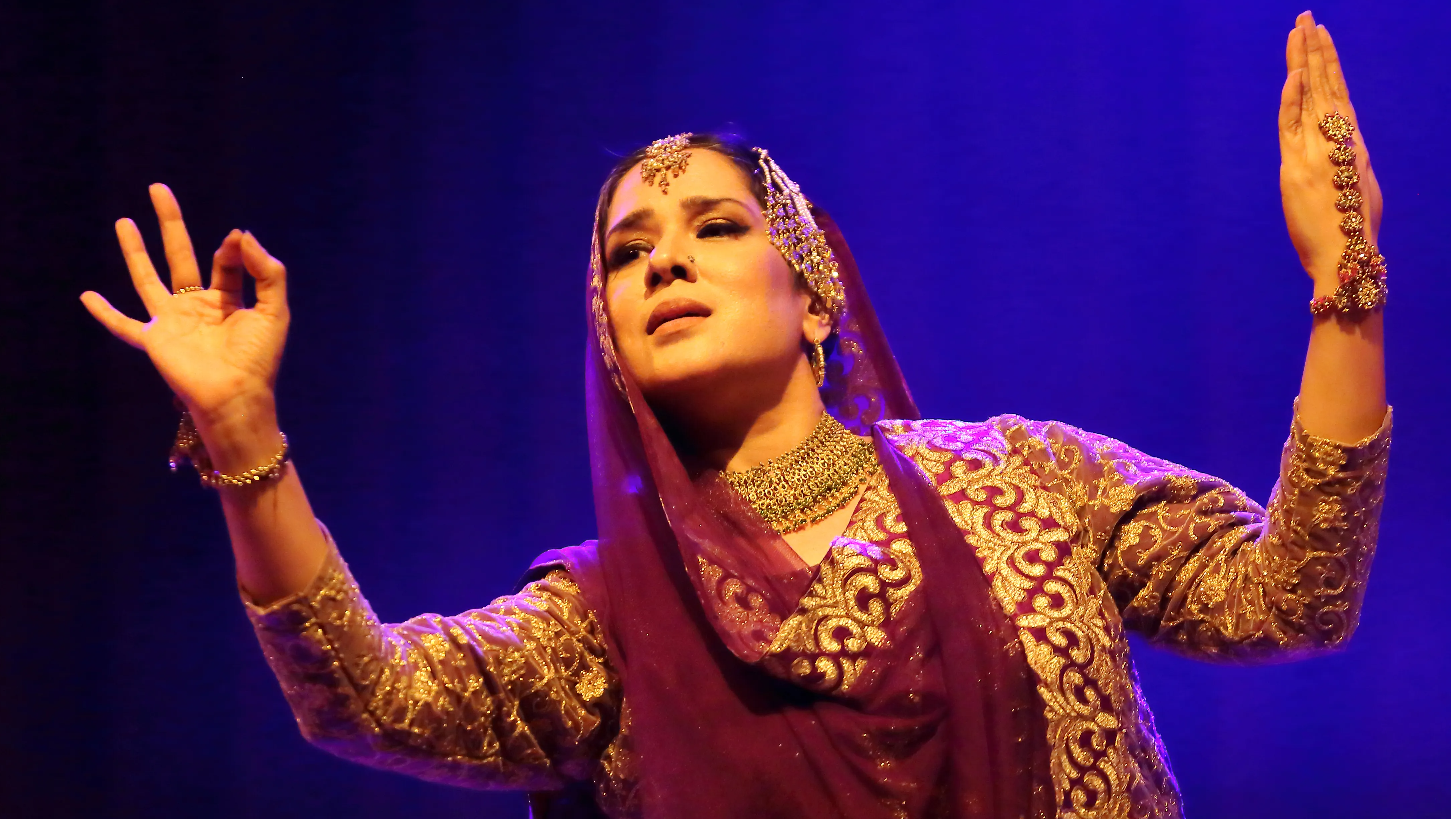Manjari
Chaturvedi engages in the very essence of Kathak, a dance form that derives its
name from the Sanskrit word ‘Katha’, which means a story. She is the creator
and only performer of Sufi Kathak in the world and has blazed her path in
Indian classical dance.
Indian dance
forms, she says are predominantly Bhakti-oriented – Sagun and Nirgun. The first
form means that God has a form, while the latter is all about worshiping a God
that is formless.
“I explored
the Nirgun-bhakti and combined it with Indian classical dance and called it
Sufi Kathak. As a dancer, my body is a language and I am communicating to the audience that the Almighty is formless,” tells Manjari Chaturvedi over a call
on a languid afternoon.

In a career
spanning over 20 years, the legendary dancer has collaborated with around 400
musicians in more than 25 countries, like Iran, Turkey, Pakistan, and India.
She studied the dance and music forms in the regions related to mystical
traditions.
“Creative
work comes and goes, but if something has stayed for 20 years then it is relevant.
I started in 1998 and now it’s been almost 22 years – I feel that Sufi Kathak
is the need of an hour, we need to talk about love, acceptance, and the
boundaries created by border, religions, etc. among people,” she says while
discussing the need for Sufi Kathak.
A lot of my
work, Manjari says, “Will be the part of the history and at the present people
might not understand why a Kathak dancer is wearing black and dancing to Baba
Bhule Shah, a Punjabi philosopher, and Sufi poet.”
Her dance
form is not just unusual, but also has a vision when it comes to empowerment
and creating awareness. “Dance is life for me. It’s an expression where I can
surrender myself without any fear. If I tell a story about a Sufi Saint or a
Tawaif, I do it with full honesty.”
A
postgraduate in Environmental Science, she managed to strike a fine balance
between art and academics at the insistence of her father, Prof. Ravi Shankar
Chaturvedi, a Geophysics professor at IIT Roorkee. “I was in class 10th when I
started learning Kathak as a hobby and no one thought that I would take it up
as my career. My parents allowed me to think on my terms which gave me the
strength to make unconventional choices in my art and be unruffled by
criticisms they evoke.”

She adds,
“Right from the colour of my costume (she uses a lot of blacks) to compositions
(sometimes she dances to qawwalis), have come under intense scrutiny by the
purists, who have often made known their displeasure. But isn’t art about
individual search and interpretation?”
Manjari
draws her inspiration from reading poetry and researching about it. “It’s only
when I started working on my dance, did I realise that the treasures that
existed in Hindi, Urdu, and Farsi and I started reading poetry for
inspiration.”
She supports
her statement with a beautiful example, “Baba Bulleh Shah danced on ‘Tere Ishq
nachaiyaan kar key thaiyaa thaiyaa’, and for years I’ve read that composition,
but couldn’t dance to it. I wasn’t ready to do justice with what he wanted to
say. Imagine a man who would dress up as a woman, goes on the streets – what
kind of surrender and love you would need to let go of all your inhibitions. I
was probably not ready for that sort of surrender. However, now I can
understand it better.”
She says
that “Dancing and music is not an organised sector.”
“… and there
has been no logistical support from our government agencies or organisations.
You are on your own and have to build your resources. It took time for people
to understand my art form, many opposed it.”
“We still
don’t have correct information about ‘Mujra’ performances by courtesans.
Everything available is the Bollywood masala version. Our understanding of a
courtesan is largely Bollywood influenced,” she tells.
“It shocked
me how the data recorded in history is based on gender inequality, the men
pursuing these arts became ‘Ustads’ and the women pursuing the same arts became
‘Nautch Girls’.”
The current
generations of the erstwhile male court dancers speak about the family lineage
whereas generations of the women court dancers live with a sense of shame.
“These women never disclose their lineage or any connection with the erstwhile
courts. My efforts are to remove the social stigmas associated with the
courtesans and give them their respectful place as artistes.”
She explains
how the tawaifs were a source of entertainment when there were no televisions
or theatres. “Just like you go and watch a movie of your favourite actor or a
play at the theatre, these courtesans were doing the same. Now, if I am
performing somewhere, that place becomes a ‘Kotha’ – a place where people
gather to watch my performance. They pay for the ticket and get entertained for
two hours. The word ‘Kotha’ is seen in a bad light, cause Bollywood has taught
us so.”

While taking
the traditional form of Kathak to a different and unique level by creating her
style, Manjari founded the Sufi Kathak Foundation.
“I have
around 350 musicians who are associated with Sufi tradition from small towns.
One of my Kawwal used to take half the money for every concert and kept a part
of his payment with me for his daughter’s wedding. One day, he called me and
said ‘Didi, meri beti khatam ho gayi’ (My daughter died) and I was shocked to
know how a 17-year-old girl could die. She died of appendicitis. She could have
been saved if the artist had money and knowledge.”
“We must
remember that an artist is not a beggar. They have performed for 5,000 people
at renowned places. In India, there’s no pension or medical support for the
artists and this made me start the Sufi Kathak Foundation. We provide them with
medicines, financial aid, and even help them in filling their visa forms to
help them to go abroad and perform.”

She adds,
“During this pandemic, no one spoke about the artists. I started asking people
for support and by God’s grace we are supporting around 70 families.”
“My focus is
on making the lives of these artists better and document all their good work,”
she says.
She works to
spread awareness about India’s intangible heritage in dance and music. Along
with the Foundation, she is working hard to preserve the gradually fading
traditions in music.
However,
Manjari believes the renewed interest in tradition may bring out the revival of
the art forms. “Globally, our dance forms are much sought after,” she says.







